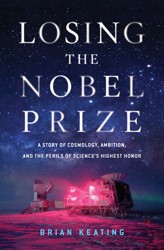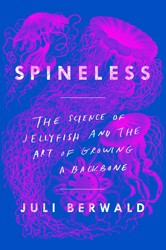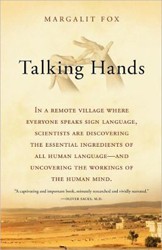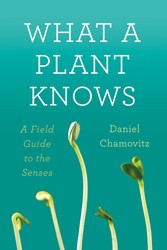January 2, 2013
Eric Kandel’s career began, it is fair to say, with a big bang on the door. The date was November 9, 1938, only two days after his ninth birthday. That just months before Hitler’s Germany has annexed Kandel’s native Austria, after a campaign of violence and terror, bothered him not at all. The entirety of his attention was devoted to a little blue car, battery operated and remote-controlled, that his parents had given him on his birthday two days previously. Kandel steered the car everywhere in his small Vienna apartment, from living room to dining room, under tables and in between chair legs.
And then came the banging on the door, and two Nazi policemen standing on the doorstep. They gave Kandel’s family a few minutes to pack up and leave, forcing them to move in with another Jewish family they did not know. When the Kandels returned home several days later, they learned that their apartment had been ransacked; gone was the jewelry, gone the silver tableware, gone were the fine clothes. Gone also was Kandel’s shiny toy car.
“The memories of those days,” Kandel writes in his new book, In Search of Memory: The Emergence of a New Science of Mind, are “the most powerful memories of my early life.”
It is memories, or, more accurately, memory, that eventually propelled Kandel to fame. Having escaped with his family to New York in 1939, Kandel originally intended to become a psychoanalyst, but soon found himself enthralled by neurobiology. In 2000, he was awarded the Nobel Prize for his contribution to illuminating the molecular processes through which memory is formed.
The question of memory, of course, is one that has preoccupied generations of thinkers of all disciplines, from Plato to Proust. As it is our memories that, to a great degree, shape our being, the understanding of the mechanism of memory— enabling, for example, the 76-year-old Kandel to remember vividly that bang on the door more than six decades ago — is, as he himself notes in his excellent book, one of “the great remaining mysteries of life.”
To shed light on the subject and explain his immensely complex research to lay readers, Kandel deftly weaves together his own personal and intellectual biography alongside a masterfully narrated history of the evolution of the science of the mind. It’s an ingenious stratagem, one that Kandel insists is not a stratagem at all.
“One of the things that I think has turned out to be unplanned by me but I think somewhat fortunate,” he said, “is that people tell me that the book has a number of very difficult parts, and what often helps people get through it is that I bring in some personal history, or some history of the field, or some descriptive aspects that are easy to follow and that interrupt the flow of the difficult arguments. So I think that without meaning to make it a didactic device, this combination has turned out to be didactically useful.”
And, like some great scientific discoveries, Kandel stumbled upon his storytelling formula almost coincidentally.
“When you win the Nobel Prize,” he said, “they ask you to write two essays. One is an autobiographical essay, and the other is the scientific lecture that you give. Most people do not take the autobiographical essay seriously, and so they vary tremendously in quality, and I find that my autobiographical essay, which was very long, was very, very favorably received, and people for a number of years thereafter were coming to me, saying ‘boy, to live up to that standard, that’s going to be very hard.’ And I realized that there was more interest in my Jewish Viennese past than I thought, and that’s when I got the idea of putting the two ideas together, and the book is really a much, much expanded version of those two components of the Nobel assignment.”
In a sense, however, the intertwining of art and science in Kandel’s book should come as no surprise, as his field itself, neurobiology, is a bridge of sorts between these two seemingly disparate disciplines.
“That neurobiology is a more natural bridge between the arts and the sciences, that is without question,” said Kandel. Recently, he added, he gave a lecture in Vienna expanding on that very topic, entitled “The Vienna School of Medicine and the Origins of Austrian Expressionism.”
“I was pointing out how people like Rokitansky, who was a famous pathologist, and Freud, with their interest in trying to get deep into understanding what’s going on with the human body and human mind, set the stage for people like Schiele and Kokoschka, for exploring human motivation in painting. And I gave another lecture on reductionism in art and science, showing how minimalist painters like Rothko really use the same strategy that we do, simplifying external reality to understand it more deeply.”
The latter strategy is one Kandel knows much about. He achieved many of his insights by looking at the Aplysia, a giant marine snail with a simple nervous system. By observing and experimenting on the uncomplicated creature, Kandel was able to gain insight into the working of a much more complex system, the human brain.
Choosing the snail, he said, “was a good idea on my part, and a very fortunate one. I didn’t know ahead of time that it would be such a good idea, but soon after I was in it I realized that this was a system that was made for me, that I was very comfortable with it, and that I could see things with it and do things with it that other people might not. The strategy is very simple, I thought; learning and memory are complicated, and I would go and study the simplest example. That’s a conventional strategy within biology, people just didn’t think of applying it to mental processes. And I thought that every animal needs to learn, and therefore Aplysia must have learning capabilities, and since its nervous system is very simple and very approachable, I should be able to work out a behavior that could be modified by learning and see what happens in the brain when the animal learns. And I found that the reflex that I studied, that was modified by learning, was made up of a certain number of cells that were connected to each other in very precise ways, and that learning changed these precise connections. It altered the strength of communication between the cells. And that was the first demonstration of how learning works.”
Many more were to follow, and they are described in the book in detail and in context; among the subjects that Kandel tackles are consciousness, memory loss, subjectivity and mental illness.
And yet, despite Kandel’s devotion to understanding memory — he is currently heading a company that does work on preventing age-related memory loss — he is the first to admit that sometimes, forgetting can be bliss.
“A lot of things are miserable,” he said, “and you want to forget about them. It’s not desirable to retain everything. You want to selectively remember those things that are meaningful, and filter out those things that are unimportant.”
“One of the messages that I would like to have come across is that science is fun,” he said, laughing. “And that you don’t have to be born knowing that you want to be a scientist at age five, you can just follow your nose and get into science at various points in your academic life, and that it’s a marvelous way to spend a career. I’m 76 years old. I could be, as my father would say, in Miami Beach walking over a shtickle, but I have no interest in doing that. The reason I do science is because it is, next to my personal life, the most pleasurable thing in the world.”
And then came the banging on the door, and two Nazi policemen standing on the doorstep. They gave Kandel’s family a few minutes to pack up and leave, forcing them to move in with another Jewish family they did not know. When the Kandels returned home several days later, they learned that their apartment had been ransacked; gone was the jewelry, gone the silver tableware, gone were the fine clothes. Gone also was Kandel’s shiny toy car.
“The memories of those days,” Kandel writes in his new book, In Search of Memory: The Emergence of a New Science of Mind, are “the most powerful memories of my early life.”
It is memories, or, more accurately, memory, that eventually propelled Kandel to fame. Having escaped with his family to New York in 1939, Kandel originally intended to become a psychoanalyst, but soon found himself enthralled by neurobiology. In 2000, he was awarded the Nobel Prize for his contribution to illuminating the molecular processes through which memory is formed.
The question of memory, of course, is one that has preoccupied generations of thinkers of all disciplines, from Plato to Proust. As it is our memories that, to a great degree, shape our being, the understanding of the mechanism of memory— enabling, for example, the 76-year-old Kandel to remember vividly that bang on the door more than six decades ago — is, as he himself notes in his excellent book, one of “the great remaining mysteries of life.”
To shed light on the subject and explain his immensely complex research to lay readers, Kandel deftly weaves together his own personal and intellectual biography alongside a masterfully narrated history of the evolution of the science of the mind. It’s an ingenious stratagem, one that Kandel insists is not a stratagem at all.
“One of the things that I think has turned out to be unplanned by me but I think somewhat fortunate,” he said, “is that people tell me that the book has a number of very difficult parts, and what often helps people get through it is that I bring in some personal history, or some history of the field, or some descriptive aspects that are easy to follow and that interrupt the flow of the difficult arguments. So I think that without meaning to make it a didactic device, this combination has turned out to be didactically useful.”
Beyond the didactic benefits — Kandel’s explanations of even the most elaborate of biological concepts are lucid, and most are accompanied by clear and helpful illustrations — intertwining the scientific, historical and biographical narrative strands gives the work an appeal uncommon in books about serious science. At times, Kandel’s enthusiasm for his own work or that of his colleagues is so catching that the science, quietly conducted in labs, appears as thrilling and adventurous as a treasure hunt or a safari in the wild.
And, like some great scientific discoveries, Kandel stumbled upon his storytelling formula almost coincidentally.
“When you win the Nobel Prize,” he said, “they ask you to write two essays. One is an autobiographical essay, and the other is the scientific lecture that you give. Most people do not take the autobiographical essay seriously, and so they vary tremendously in quality, and I find that my autobiographical essay, which was very long, was very, very favorably received, and people for a number of years thereafter were coming to me, saying ‘boy, to live up to that standard, that’s going to be very hard.’ And I realized that there was more interest in my Jewish Viennese past than I thought, and that’s when I got the idea of putting the two ideas together, and the book is really a much, much expanded version of those two components of the Nobel assignment.”
In a sense, however, the intertwining of art and science in Kandel’s book should come as no surprise, as his field itself, neurobiology, is a bridge of sorts between these two seemingly disparate disciplines.
“That neurobiology is a more natural bridge between the arts and the sciences, that is without question,” said Kandel. Recently, he added, he gave a lecture in Vienna expanding on that very topic, entitled “The Vienna School of Medicine and the Origins of Austrian Expressionism.”
“I was pointing out how people like Rokitansky, who was a famous pathologist, and Freud, with their interest in trying to get deep into understanding what’s going on with the human body and human mind, set the stage for people like Schiele and Kokoschka, for exploring human motivation in painting. And I gave another lecture on reductionism in art and science, showing how minimalist painters like Rothko really use the same strategy that we do, simplifying external reality to understand it more deeply.”
The latter strategy is one Kandel knows much about. He achieved many of his insights by looking at the Aplysia, a giant marine snail with a simple nervous system. By observing and experimenting on the uncomplicated creature, Kandel was able to gain insight into the working of a much more complex system, the human brain.
Choosing the snail, he said, “was a good idea on my part, and a very fortunate one. I didn’t know ahead of time that it would be such a good idea, but soon after I was in it I realized that this was a system that was made for me, that I was very comfortable with it, and that I could see things with it and do things with it that other people might not. The strategy is very simple, I thought; learning and memory are complicated, and I would go and study the simplest example. That’s a conventional strategy within biology, people just didn’t think of applying it to mental processes. And I thought that every animal needs to learn, and therefore Aplysia must have learning capabilities, and since its nervous system is very simple and very approachable, I should be able to work out a behavior that could be modified by learning and see what happens in the brain when the animal learns. And I found that the reflex that I studied, that was modified by learning, was made up of a certain number of cells that were connected to each other in very precise ways, and that learning changed these precise connections. It altered the strength of communication between the cells. And that was the first demonstration of how learning works.”
Many more were to follow, and they are described in the book in detail and in context; among the subjects that Kandel tackles are consciousness, memory loss, subjectivity and mental illness.
And yet, despite Kandel’s devotion to understanding memory — he is currently heading a company that does work on preventing age-related memory loss — he is the first to admit that sometimes, forgetting can be bliss.
“A lot of things are miserable,” he said, “and you want to forget about them. It’s not desirable to retain everything. You want to selectively remember those things that are meaningful, and filter out those things that are unimportant.”
And what is important to Kandel the author?
“One of the messages that I would like to have come across is that science is fun,” he said, laughing. “And that you don’t have to be born knowing that you want to be a scientist at age five, you can just follow your nose and get into science at various points in your academic life, and that it’s a marvelous way to spend a career. I’m 76 years old. I could be, as my father would say, in Miami Beach walking over a shtickle, but I have no interest in doing that. The reason I do science is because it is, next to my personal life, the most pleasurable thing in the world.”





